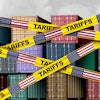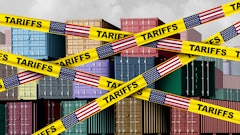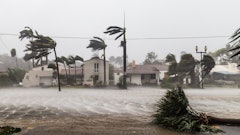
If you handle, store or ship hazardous materials, you’re operating with almost no margin for error. That margin seems to vanish during peak season when volumes surge and shortcuts slip in. There’s already a fallout. Cargo fires tied to undeclared or mislabeled dangerous goods are climbing in maritime shipping, pushing carriers to turn to AI for detection. Aviation regulators keep logging lithium battery smoke and fire events. These aren't isolated incidents, but why do they keep happening?
On the surface, the reasons seem obvious: mislabeling, sloppy storage, and missing documentation. Nevertheless, this negligence leads to full-blown emergencies that significantly threaten public safety.
What compliance really means
Hazard compliance is often seen as dull or boring, nothing more than printing the right label. Just another round of hoops to jump through because some regulator said so. It’s easy to think compliance is there to slow you down, to make business harder. And the hardest part is this: you rarely see the disasters you prevent. There’s no headline that says, “Shipment Arrives Safely.” No TV cameras waiting outside a warehouse because every battery was documented correctly. The victories in compliance are invisible, and that’s why they’re so easy to undervalue. But invisible doesn’t mean unimportant. It means you only notice when it’s too late.
The truth is brutal. Every label, every form, every rule is there to protect people. The worker stacking pallets in your warehouse, the flight crew cruising at 30,000 feet, the crew hundreds of miles at sea with a ship full of containers. Compliance is what keeps your products from turning into poison in a customer’s hands.
Lithium batteries have become the clearest test. They look ordinary, but one mislabeled package can turn a routine shipment into an inferno. The difference between a safe shipment and a disaster can come down to whether your team knows one UN number from another. Standards groups like NFPA have already added new fire-prevention guidance, which is best viewed as a starting line. Not the finish line.
How companies keep getting it wrong
The most damaging mistakes are often the simplest. Everyday goods, toys, vapes, cosmetics, cleaners, etc., get shipped as if they’re harmless when they’re anything but. Safety data sheets disappear, leaving employees to guess. Packages are repacked or relabeled without the paperwork ever catching up. Training gets watered down or skipped altogether, especially when temporary workers are thrown into chaos during the holidays.
On paper, none of this sounds dramatic. Yet these are the sparks that light the fires, trigger the fines and destroy customer trust.
Building resilience into compliance
So, what does success look like? It’s not about heroics, it’s about discipline. Companies that get this right maintain live inventories that map every SKU to the correct classification. They refuse to move products without complete documentation. They embed compliance checks into their systems, so rules aren’t left to memory or luck. They make training continuous, role-specific, and designed for real-world pressure, not just for passing a test.
And they build strong relationships with local fire departments so that when the worst-case scenario happens, first responders already know what they’re walking into. These aren’t expensive programs. They’re deliberate habits that turn compliance from a reactive task into a built-in strength.
Why it matters now more than ever
The stakes are high on three levels.
1. There’re risk and cost. Fires destroy inventory and shut down operations, but the reputational fallout can be worse. No company wants to see its name tied to a community evacuation or environmental disaster.
2. There’s continuity. Carriers tighten capacity after headline-grabbing incidents. Shippers with a clean record and complete documentation keep moving while others get left behind.
3. There’s customer trust. Consumers expect speed, but never at the expense of safety. They won’t forgive brands that cut corners and put people at risk.
The bottom line
Hazard compliance isn’t about boxes, labels, or checklists. It’s about the people who trust you to get it right. The worker who goes home safe at the end of their shift. The pilot who doesn’t have to fight smoke at 30,000 feet. The family who doesn’t wake up to sirens and evacuation orders because someone thought a shortcut was good enough.
Every time you treat compliance like a nuisance, you’re playing roulette with lives. And when the wheel stops, it won’t just be your product in flames.
This industry doesn’t need more companies checking boxes. It needs leaders with the guts to say: safety isn’t optional, it’s who we are. Because in the end, you can rebuild a warehouse, you can repair a balance sheet, but you cannot undo the damage when a preventable fire steals someone’s life.
That’s what’s at stake. Not paperwork. Not process. People. Always people.


















